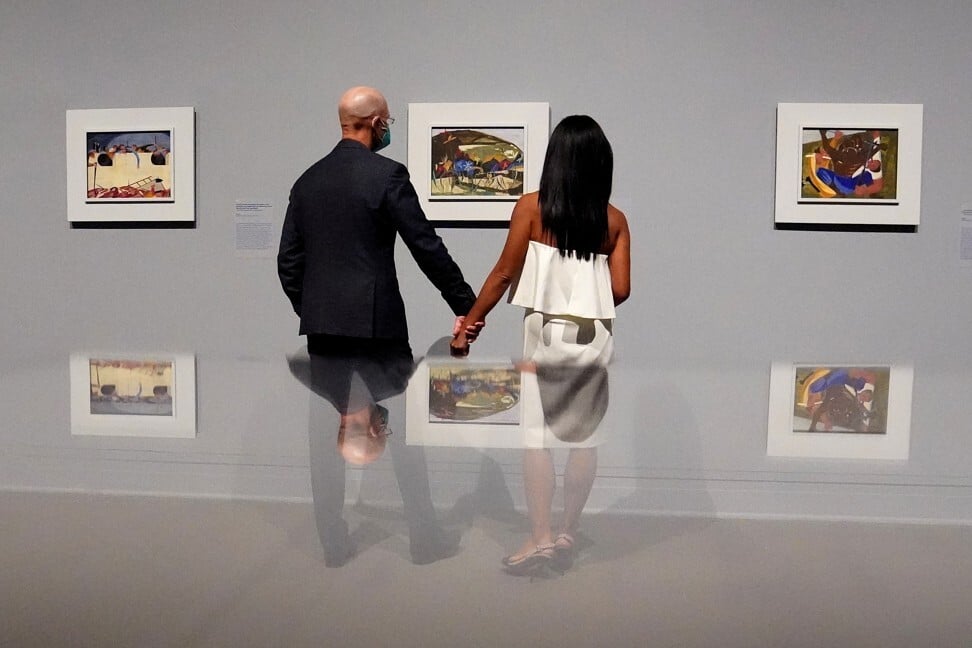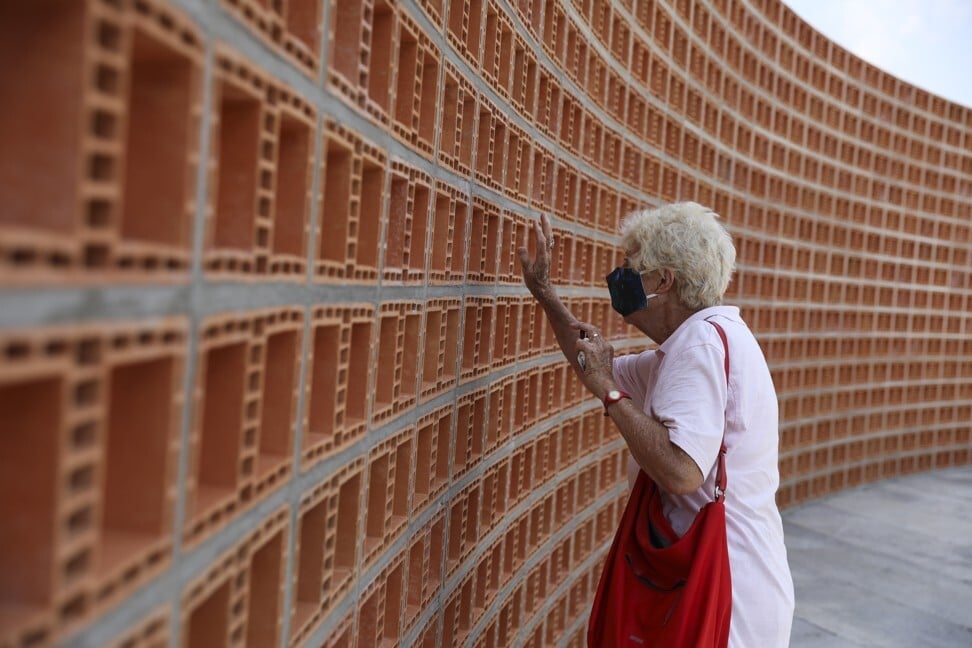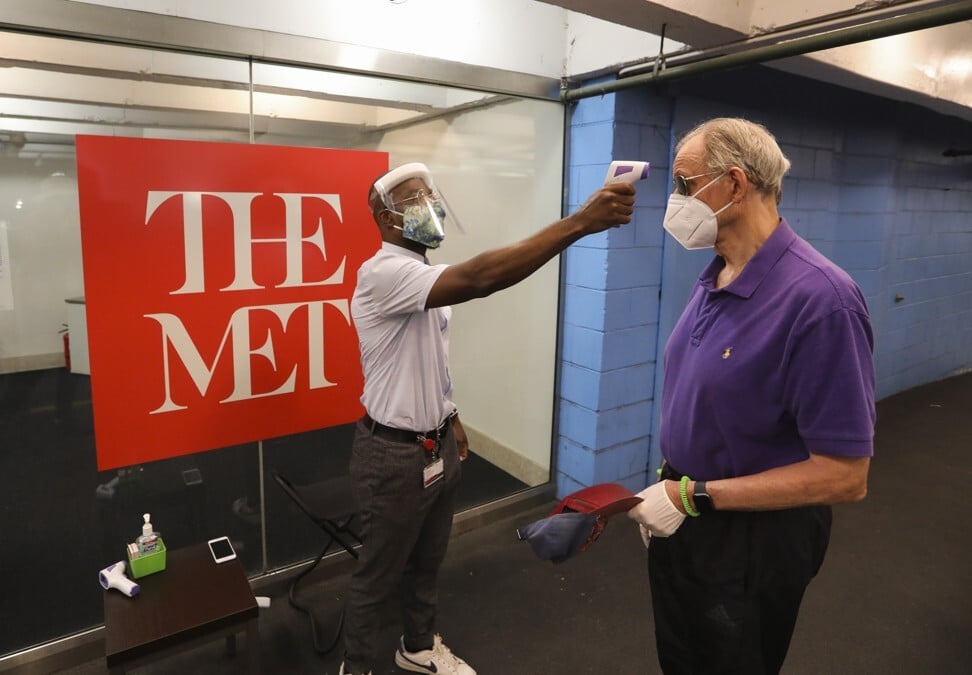
Behind the scenes as Metropolitan Museum of Art reopens after Covid-19 shutdown – and New York tells the world it’s back in business
- A New York icon, the Met has opened its doors to visitors for the first time since closing in March to fight Covid-19. Staff reflect on what it took to reopen
- ‘You can find here respite, solace, maybe even energy again,’ its director says. The same cannot be said of many smaller museums, which may not reopen at all
Dennis Kaiser leaned out of the scissor lift to reach the trumpeting angel. He gently brushed a vacuum cleaner hosepipe along her outstretched arm. For a minute, the sculpture and the art handler formed similar silhouettes in the sun-drenched American Wing.
One, carved of wood 120 years ago, was crafted at a time when the Industrial Revolution was transforming modern life. The other, as contemporary as could be, sucked up the accumulated dust of six months of coronavirus pandemic-required absence.
Although 20 per cent of its staff have been laid off, furloughed or have retired, its giant flowerpots have been left empty for months, and its Great Hall staircase dimmed to reduce light exposure, the Metropolitan Museum of Art in New York was being readied for visitors.
Five months after closing abruptly on March 13, the Met is open again. One of New York’s biggest tourist attractions, and currently celebrating its 150th anniversary with a new exhibition, it had never before closed for more than three days – and that was for bad weather.

Two giant white banners were unfurled on the museum’s front facade: “Dream”, one reads. “Together”, responds the other, both designed by the Japanese-American artist Yoko Ono. “It was a really very uplifting and emotionally charged moment to see that work,” the museum’s director, Max Hollein, said.
Reopening the museum, he said, is a sign of the return to some semblance of normalcy in the city and the United States as a whole, while many challenges, uncertainty and suffering remain part of daily life.
Ai Weiwei on living in exile, activism and a secret Wuhan film
“You can find here respite, solace, maybe even energy again, passion, excitement,” said Hollein, a native of Austria. “All these things I would say: that’s what a museum is for and what art, in general, is for.”
New York Governor Andrew Cuomo gave permission earlier this month for the city’s museums to reopen.
The Philadelphia Museum of Art also is planning to reopen soon, while other major city museums across the US, including the Boston Museum of Fine Arts and the Los Angeles County Museum of Art, have not announced reopening plans. The Art Institute of Chicago has been open since late July and the St. Louis Art Museum since mid-June.

The financial burden of the Covid-19 pandemic is forcing museums to reconsider their future. One out of every three museums may never reopen, according to a survey this summer by the American Alliance of Museums.
Of those that do reopen, more than 40 per cent will have cut staff and will need to spend money to reopen safely, the survey found. Tourism is a major source of income for many museums. At the Met, 70 per cent of last year’s more than 7 million visitors came from outside the New York area. Today, there are few tourists in the Big Apple.
With all the problems America faces today, Hollein said he understands – and even agrees – that museum donations should not be the highest philanthropic priority. But he thinks it would be a travesty to allow museums to die.

“The diversity of our cultural offerings is such an important part of the cultural fabric of this country, and the social fabric, and the cohesion,” he said.
He is particularly concerned about the future of smaller museums. “It’s important that they get supported through any means possible.”
Although the Met will, of course, survive, “this whole thing couldn’t have come at a worse time”, Hollein said.

More than 800 signs and stickers have been added throughout the museum to direct visitors and remind them to keep their distance from others. An 80-page document that took several staff most of the summer to write dictates exactly where each sign will be placed and how traffic flow will be directed.
Cristina Ambroselli, manager of visitor experience, said there would be no maps or audio guides – nothing to pick up, including the coronavirus. OPTIONAL CUT STARTS HEREWireless access has been improved throughout the museum during the pandemic, so visitors will be able to download maps and information on their phones instead. The museum, like many others, has spent the shutdown improving its digital offerings. OPTIONAL CUT ENDS HERE
There’s something really magical about being in the building when there aren’t any visitors
Most spaces will be open, unless they’re too small to be safe, as in the interior of the Frank Lloyd Wright room, which visitors will be able to peer into, but not walk in, said Gillian Fruh, manager for exhibitions.
She hopes all the signage, one-way directional flow and need for distance will help. “As with everything in the new Covid-19 world, you have to move a bit slower, which in the case of art is kind of a good thing.”
The expansive American Wing felt particularly vacant with just Kaiser on his lift, and two workers standing outside the only restaurant that is reopening with the museum. “It’s still weird,” Kaiser said, to have so few people in the museum. “Being around the art feels good.”

At times the emptiness can feel either special or creepy. “There’s something really magical about being in the building when there aren’t any visitors,” Fruh said. The museum feels bigger now that it’s been empty of visitors for so long, she and Kaiser agreed. And, she admits, “walking by the mummies freaks me out a little now”.
Hollein said he finds the empty museum depressing. “You feel deprived of something, of the interactions you have with the art, you have with the visitors, and that you can have together with the staff,” he said.
He, Fruh, Ambroselli, and Kaiser all agreed: it’s time for visitors to return.

